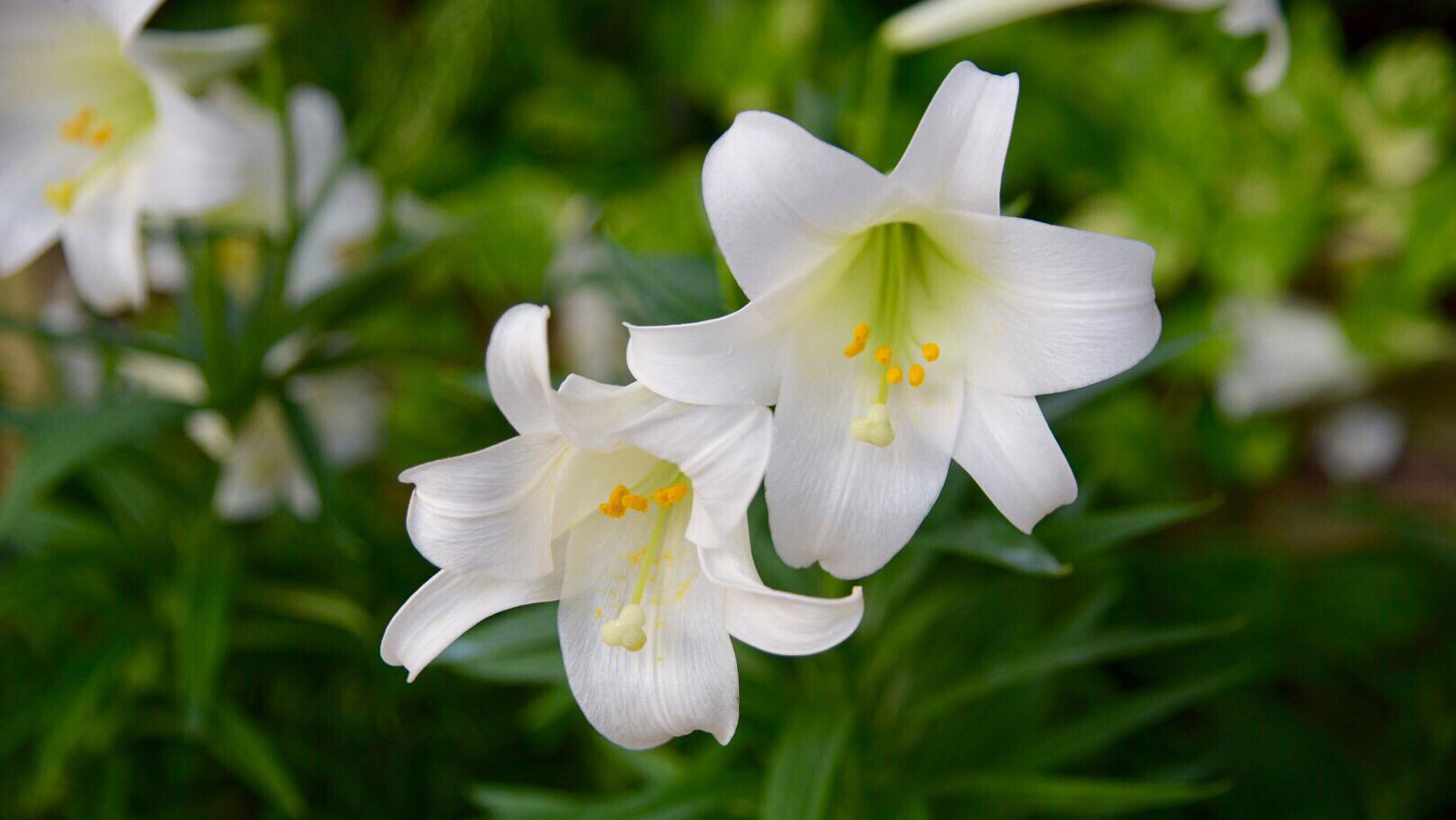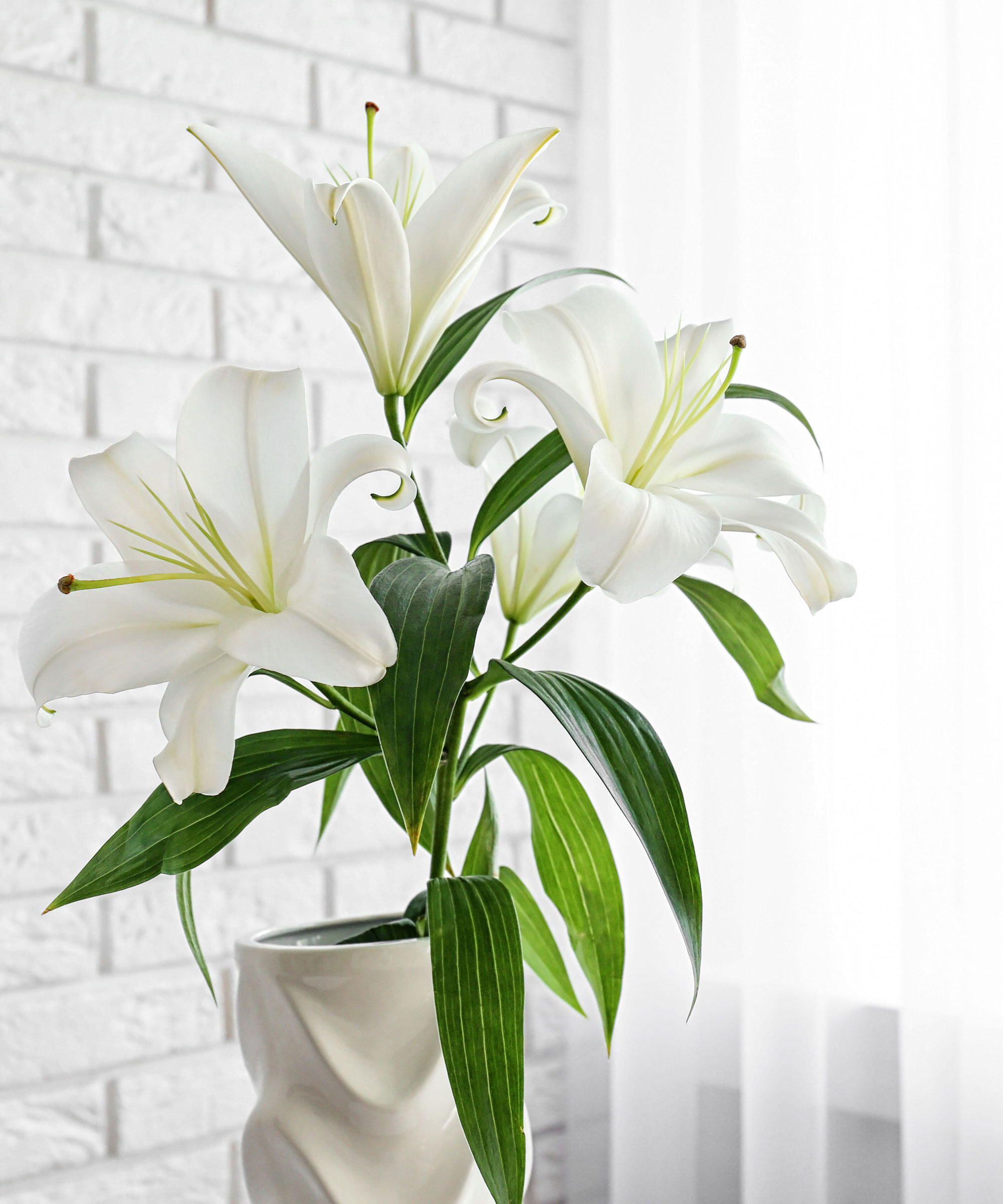Why is my Easter lily drooping? Experts reveal 4 potential reasons and solutions
Find out why the leaves and flowers on your Easter lily are drooping and how to stop the wilt


If your beautiful Easter lily plants are drooping, you're probably wondering if it's too late to save them. The good news is there are several reasons why this may have happened and if you rectify the situation quickly, your plant should soon recover.
This is not to be confused with your Easter lily plants becoming withered at the end of their flowering cycle, in which case wait until it's warm enough to transplant them outdoors to their new home in the garden. With proper care, they can thrive and bloom again next spring.
It's always a good idea to start the revival by trimming off any faded flowers and brown foliage, which will help to re-energize the bulb. Snipping these off at the base means the plant will direct its energy into producing more flowers. It's also worth pointing out that drooping Easter lily plants are something that tends to affect those grown indoors rather than ones planted outside in the garden.
Make sure you're following the best Easter lily care routine – and if you are, it's time to consult our checklist of common mistakes to find out if you're contributing to the reason why your Easter lily is drooping.

Sarah Wilson has been writing about gardens since 2015, covering everything from garden design to houseplant care. She has studied introductory garden and landscape design as well as floristry. When it comes to choosing indoor plants for spring, she's a big fan of Easter lilies.
4 reasons why your Easter lily is drooping
Beautiful Easter lily plants are perfect for including in your Easter decor ideas, but only if they're looking their best. Find out about these easily avoidable mistakes to make sure your plant stops drooping and stays thriving.

Easter lilies are the perfect blooms for seasonal spring decor
1. Incorrect watering
Knowing how often to water houseplants and outdoor plants is crucial for their health, and Easter lilies are no exception. If yours is drooping, it's highly likely it could be linked to the way you're watering (or not watering) your plant. This means you are probably either watering too much or too little.
'Your Easter lily is likely drooping from too much or insufficient water,' confirms Lindsey Hyland of Urban Organic Yield. 'If you've been over-watering, the roots may have suffered from root rot caused by poor drainage or sitting in water for too long. On the other hand, if you haven't been watering as often as needed, your plant could be experiencing dehydration and wilting due to lack of moisture.'
Design expertise in your inbox – from inspiring decorating ideas and beautiful celebrity homes to practical gardening advice and shopping round-ups.
To remedy this problem, check the soil around the lily, both by observing it and then pushing in your fingertip. If it's very dry to the touch, it means your plant needs a drink. Your lily should perk up within an hour of being watered.
Meanwhile, if the soil is very wet, you have probably over-watered your lily. Adjust your watering schedule to provide enough moisture for your plant without over-watering. To prevent further drooping, ensure that water can properly drain out of the pot so your plant isn't sitting in water.
2. Your plant is too cramped in its pot
Lilies growing indoors may be pot-bound with their root system completely filling the container, especially if you've had them for a while. If their root system is compacted, it will demand lots of water. But sometimes even frequent watering may not be enough to stop the leaves from drooping.
Carefully ease the plant out of its pot and you'll soon see if the roots are cramped for space and your plant needs repotting into a larger container. If the weather is right, consider transplanting your Easter lilies to the garden instead.

Check the roots of your Easter lily to see if it needs re-potting
3. Transplant shock
Moving your plant to a new location is a common reason for causing Easter lilies to droop. When you transplant a plant from indoors to outside, or repot it, it can take time for the roots to adjust to their new environment. Find out when to plant lily bulbs and, if moving them outdoors, allow the plant to acclimatize to outdoor light and temperatures gradually by letting it sit in the porch or another covered area for a few days.
'Transplanting can cause stress to the plant and make it droop,' says Robert Silver of Progardeningblog. 'To minimize transplant shock, make sure you're transplanting the Easter lily at the right time. The best time to move the plant is after it has finished flowering, during the plant's dormant period. Be gentle with the roots. Remove the plant from its original pot, being careful not to damage the roots.' If the roots are tightly packed, you can gently loosen them to encourage growth.
'Outside, your Easter lily may droop due to extreme weather conditions, whether too hot or too cold,' adds Aaditya Bhatta of Plantscraze. 'Ensure that the plant is kept in a constant, cool climate.'
4. Your Easter lily has bugs
A range of common houseplant pests and diseases can affect Easter lily plants, including aphid infestation. As well as discoloring the leaves and damaging the flowers, this can also result in a lack-luster looking plant.
'Pests and diseases such as mealybugs, aphids, scales, or fungal infections can weaken the plant, causing the leaves to droop,' says Richa Kedia of Simplify Plants.
Thoroughly check over the leaves of your Easter lily plant for signs of disease such as a fungal issue or infestation. Check stems and buds for aphids and other small insects. A severe aphid infestation might result in drooping leaves. If aphids are the problem, zap them with a blast from the garden hose or kitchen sink sprayer.

Lifestyle journalist Sarah Wilson writes about garden design and landscaping trends for Homes & Gardens. She has studied introductory garden and landscape design, and also has an RHS Level 2 qualification in the Principles of Plant Growth and Development. She is a regular contributor to Homes & Gardens and Livingetc. She has also written for Country Living, Country Homes & Interiors, and Modern Gardens magazines